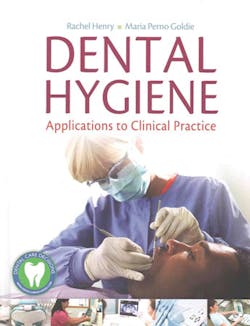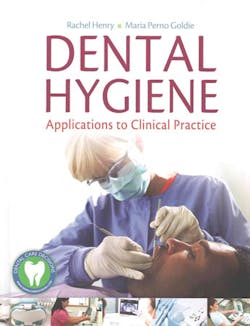Classroom ideas: A new textbook and international meeting may inspire dental hygiene instructors
By JoAnn Gurenlian, RDH, PhD
It is that time of year for many dental hygiene educators, when the students have finished their semesters and summer is upon us. We have lighter teaching loads and can think about taking a vacation, planning for the upcoming academic year, and getting a chance to catch up to all those projects that have been sidelined. For those educators who may be thinking about the year ahead, there are two recommendations I would like to make.
I recently attended the third International Dental Hygiene Educators’ Forum (IDHEF). It was held on March 17, 2017 just prior to the ADEA Annual Session in Long Beach, California. This meeting is organized and hosted by Maria Perno Goldie and Sylvia Fresmann. They created the first IDHEF conference three years ago and held it in Germany as a way to offer dental hygiene educators an opportunity to network and discuss cutting-edge topics. The meeting was a success. In 2016, the IDHEF conference was held just prior to The Canadian Dental Hygienists Association annual conference in British Columbia, and it was outstanding. Speakers and attendees from around the world were highly engaged and reluctant to have the day end.
This third IDHEF brought together national and international speakers who addressed topics that included how to teach evidence when we don’t like the evidence, using innovative technology in clinical and classroom settings, addressing national health issues through inter-professional curricular approaches, web-conferencing in dental hygiene education, curricula for ultrasonic instrumentation, key professional dental hygiene resources influencing dental hygiene education and practice, creating successful submission to peer reviewed scientific journals, and a panel discussion with international leaders. Throughout the day, participants were involved, excited, well-fed, laughing, and learning with and from each other. They received eight continuing education credits for a registration fee of $130!
I am sharing this information with the readership, particularly dental hygiene educators, because often we find ourselves in the position of paying well over $600 to register for a professional meeting, walking the length of football fields to hear speakers, maybe finding a cup of water in the poorly lit room, and wondering if we really were getting our money’s worth from the meeting. For 2018, you may want to put the IDHEF on your calendar. The meeting may be somewhere interesting - the US, Italy, maybe even Australia. Wherever it is, think about trying something new.
Dental hygiene textbook
My second recommendation is to consider adopting a new textbook for dental hygiene students. Yes, we have Wilkins’ beloved “Clinical Practice of the Dental Hygienist” and Darby & Walsh’s “Dental Hygiene Theory and Practice.” Both texts are resources that have served dental hygiene education well. Last year, a new text became available titled “Dental Hygiene: Applications to Clinical Practice” by Henry and Goldie. A companion workbook for students is provided for additional learning experiences. Each chapter is written from an evidence-based perspective and also has key areas that focus on applications to clinical practice, advancing technologies, teamwork, and spotlight on public health as well as case studies, active learning exercises, and review questions. At the IDHEF, several speakers showcased this new text and some provided side-by-side comparisons of topics presented in the three major dental hygiene texts. There was a clear difference between the three.
Coincidentally, after this meeting, I received a phone call from someone pursuing her doctoral degree. She was taking a leadership course and we talked about this new textbook. She mentioned that her program director looked at the Henry/Goldie text but was concerned about switching from the Wilkins text. Her fear was that the students might not pass the boards. We talked about students learning the latest information from an evidence-based perspective, but the response was the chairperson felt it was important to “go with what we know rather than take a chance on something new.” And that thinking, my dear colleagues, is what is wrong with dental hygiene education. How will we ever teach students to embrace change if we are afraid of change ourselves?
As you start planning for the next academic year, if you used the same course syllabus for more than three years, delete it on your computer and create something new. Adopt a new textbook for the preventive dental hygiene courses and retire the one that has been used for the last ten years. Add the Boge 513 instrument or some other new instrument to the instrument kit. Teach ultrasonic instrumentation in the fourth week of the first semester. And/or, add PebblePad technology to your clinical assessment. Whatever you do, dare to be a little different than the educator you were last year. RDH
JOANN R. GURENLIAN, RDH, PhD, is president of Gurenlian & Associates, and provides consulting services and continuing education programs to health-care providers. She is a professor and dental hygiene graduate program director at Idaho State University, and past president of the International Federation of Dental Hygienists.

